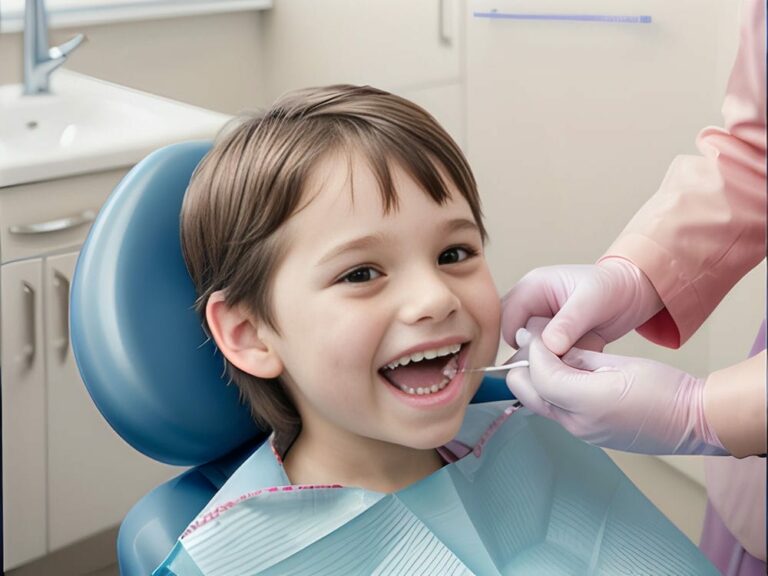Effective Communication Strategies for Engaging Diverse Patient Populations
Effective Communication Strategies for Engaging Diverse Patient Populations
In today’s multicultural society, healthcare professionals must adopt effective communication strategies to engage and provide quality care to diverse patient populations. Cultural competence plays a crucial role in fostering understanding and trust between healthcare providers and patients from different backgrounds. One important strategy is the use of interpreters or language services to overcome language barriers. By ensuring accurate communication, healthcare providers can gather essential information, understand patients’ needs, and effectively address their concerns.
Another key strategy is the use of plain language and visual aids in patient education materials. In many cases, medical jargon can be confusing and overwhelming for patients with limited health literacy or those from non-English speaking backgrounds. By using plain language that is easy to understand and incorporating visual aids such as diagrams or videos, healthcare providers can enhance patient comprehension and engagement in their own care. This approach not only empowers patients but also helps them make informed decisions about their health.
Addressing healthcare disparities requires healthcare professionals to be sensitive to cultural norms and beliefs. Understanding the cultural context in which patients live allows providers to tailor their communication style accordingly. For example, some cultures may place a strong emphasis on family involvement in medical decision-making, while others may prioritize individual autonomy. By recognizing these differences and adapting their approach, healthcare providers can build rapport with diverse patient populations and foster open dialogue that leads to better health outcomes.
Overall, effective communication strategies are essential for engaging diverse patient populations. Through cultural competence, patient education using plain language and visual aids, as well as sensitivity towards cultural norms, healthcare providers can bridge gaps in understanding and promote equitable care for all individuals. By embracing these strategies, we can work towards reducing healthcare disparities and ensuring that every patient receives the highest quality of care regardless of their background or circumstances.
The Importance of Culturally Sensitive Communication in Healthcare
Effective communication is crucial in healthcare, especially when engaging with diverse patient populations. Healthcare professionals must adopt strategies that promote understanding and trust between providers and patients from different backgrounds. One important strategy is the use of interpreters or language services to overcome language barriers. By ensuring accurate communication, healthcare providers can gather essential information, understand patients’ needs, and effectively address their concerns.
In addition to language services, using plain language and visual aids in patient education materials is another effective strategy for engaging diverse patient populations. Medical jargon can be confusing for patients with limited health literacy or those from non-English speaking backgrounds. By using plain language that is easy to understand and incorporating visual aids such as diagrams or videos, healthcare providers can enhance patient comprehension and engagement in their own care. This approach not only empowers patients but also helps them make informed decisions about their health.
Moreover, addressing healthcare disparities requires sensitivity towards cultural norms and beliefs. Understanding the cultural context in which patients live allows providers to tailor their communication style accordingly. For example, some cultures may prioritize family involvement in medical decision-making, while others may value individual autonomy. By recognizing these differences and adapting their approach, healthcare providers can build rapport with diverse patient populations and foster open dialogue that leads to better health outcomes.
By embracing effective communication strategies such as medical interpretation, patient empowerment through plain language education materials, and sensitivity towards cultural norms, healthcare professionals can bridge gaps in understanding and promote equitable care for all individuals. These strategies are essential in reducing healthcare disparities and ensuring that every patient receives the highest quality of care regardless of their background or circumstances.
Overcoming Language Barriers: Utilizing Interpreter Services
Effective Strategies for Engaging and Communicating with Diverse Patient Populations: A Comprehensive Guide
Language barriers can pose significant challenges in healthcare settings, making it crucial for healthcare providers to adopt strategies that promote effective multilingual communication. One important strategy is the use of interpreter services. By utilizing professional interpreters, healthcare providers can ensure accurate and clear communication with patients who have limited English proficiency. This not only helps gather essential information but also enhances patient satisfaction and overall healthcare outcomes.
Professional interpreters play a vital role in bridging the language gap between healthcare providers and patients. They are trained to accurately convey medical information while maintaining patient confidentiality and cultural sensitivity. Utilizing interpreter services ensures that patients understand their diagnosis, treatment options, and any instructions or recommendations provided by their healthcare team. This promotes better adherence to treatment plans, improved self-care practices, and ultimately leads to better health outcomes.
In addition to ensuring accurate communication through interpreters, healthcare providers should also consider the use of plain language techniques when interacting with patients from diverse backgrounds. Plain language involves using simple and clear terminology that is easy for patients to understand, regardless of their level of health literacy or English proficiency. By avoiding medical jargon and technical terms, healthcare professionals can effectively communicate complex medical concepts in a way that empowers patients to actively participate in their own care.
By employing these strategies – utilizing interpreter services for multilingual communication and adopting plain language techniques – healthcare providers can enhance patient satisfaction and engagement. Patients who feel understood by their healthcare team are more likely to trust their provider’s expertise and follow through with recommended treatments or interventions. Ultimately, effective communication contributes to improved patient outcomes, increased patient compliance, and reduced disparities in healthcare delivery.
In conclusion,
effective communication strategies such as utilizing interpreter services for multilingual communication and incorporating plain language techniques are essential for engaging diverse patient populations in healthcare settings. These strategies contribute to better understanding between providers and patients, leading to improved patient satisfaction and overall healthcare outcomes. By prioritizing effective multilingual communication, healthcare providers can ensure that every patient receives high-quality care, regardless of their language or cultural background.
Promoting Health Literacy: Enhancing Patient Understanding and Engagement
Effective communication is a crucial skill for healthcare professionals when engaging with diverse patient populations. By being mindful of cultural differences and practicing cultural awareness, healthcare providers can foster a more inclusive and patient-centered approach to care. Effective communication involves not only verbal exchanges but also non-verbal cues, active listening, and empathy.
Cultural awareness plays a significant role in effective communication. Healthcare professionals must recognize that patients from different cultural backgrounds may have unique beliefs, values, and norms regarding health and illness. By understanding these differences, healthcare providers can tailor their communication style to better meet the needs of their patients.
In addition to cultural awareness, active listening is essential in effective communication. Healthcare professionals should give their full attention to patients, listen attentively, and validate their concerns or questions. This helps build trust and rapport with patients, making them feel heard and valued.
By incorporating these strategies into their practice, healthcare professionals can improve patient understanding and engagement. Patients who feel understood are more likely to actively participate in their own care, follow treatment plans, ask questions when needed, and adhere to recommended lifestyle changes. Ultimately, effective communication enhances the overall quality of care provided and contributes to positive patient outcomes.
In conclusion,
effective communication involves practices such as cultural awareness, active listening, and empathy. By being mindful of cultural differences and tailoring their approach accordingly, healthcare professionals can foster better understanding between themselves and their diverse patient populations. This leads to increased patient engagement and ultimately improves the overall quality of care provided.
Understanding the Role of Cross-Cultural Communication in Healthcare Settings
Effective communication is crucial when engaging with diverse patient populations in healthcare settings. Healthcare professionals must possess strong communication skills to effectively communicate with patients from different cultural backgrounds. This includes being mindful of cultural differences and practicing cultural awareness.
Cultural awareness plays a significant role in effective communication. Healthcare professionals need to recognize that patients from different cultural backgrounds may have unique beliefs, values, and norms regarding health and illness. By understanding these differences, healthcare providers can tailor their communication style to better meet the needs of their patients.
In addition to cultural awareness, active listening is essential in effective communication. Healthcare professionals should give their full attention to patients, listen attentively, and validate their concerns or questions. This helps build trust and rapport with patients, making them feel heard and valued.
By incorporating these strategies into their practice, healthcare professionals can improve patient engagement. Patients who feel understood are more likely to actively participate in their own care, follow treatment plans, ask questions when needed, and adhere to recommended lifestyle changes. Ultimately, effective communication enhances the overall quality of care provided and contributes to positive patient outcomes.
Therefore, healthcare professionals should prioritize developing strong communication skills and practicing intercultural communication when engaging with diverse patient populations. This will not only improve patient understanding but also increase patient engagement in their own healthcare journey.
The Power of Patient-Centered Communication: Putting Patients First
Effective communication is crucial in healthcare settings, especially when engaging with diverse patient populations. Healthcare professionals must possess strong communication skills to effectively communicate with patients from different cultural backgrounds. This includes being mindful of cultural differences and practicing cultural awareness.
Cultural awareness plays a significant role in effective communication. Healthcare professionals need to recognize that patients from different cultural backgrounds may have unique beliefs, values, and norms regarding health and illness. By understanding these differences, healthcare providers can tailor their communication style to better meet the needs of their patients.
In addition to cultural awareness, active listening is essential in effective communication. Healthcare professionals should give their full attention to patients, listen attentively, and validate their concerns or questions. This helps build trust and rapport with patients, making them feel heard and valued.
By incorporating these strategies into their practice, healthcare professionals can improve patient engagement. Patients who feel understood are more likely to actively participate in their own care, follow treatment plans, ask questions when needed, and adhere to recommended lifestyle changes. Ultimately, effective communication enhances the overall quality of care provided and contributes to positive patient outcomes.
Therefore, healthcare professionals should prioritize developing strong communication skills and practicing intercultural communication when engaging with diverse patient populations. This will not only improve patient understanding but also increase patient engagement in their own healthcare journey. Additionally, healthcare organizations should support and encourage patient advocacy efforts by providing training and resources for healthcare professionals to enhance their cross-cultural communication skills.
Harnessing the Impact of Non-Verbal Communication in Healthcare Interactions
Effective communication is a vital component of patient-centered care, especially when engaging with diverse patient populations. Healthcare professionals must possess strong communication skills to effectively communicate with patients from different cultural backgrounds and ensure equal healthcare access for all. This requires being mindful of cultural differences and practicing cultural awareness.
Cultural awareness plays a significant role in effective communication. Healthcare professionals need to recognize that patients from different cultural backgrounds may have unique beliefs, values, and norms regarding health and illness. By understanding these differences, healthcare providers can tailor their communication style to better meet the needs of their patients. This includes using appropriate language, considering non-verbal cues, and respecting personal space.
Active listening is another crucial aspect of effective communication. Healthcare professionals should give their full attention to patients, listen attentively, and validate their concerns or questions. This helps build trust and rapport with patients, making them feel heard and valued. Additionally, healthcare professionals should encourage patients to ask questions and provide clarification when needed.
By incorporating these strategies into their practice, healthcare professionals can improve patient engagement and promote equal healthcare access for all individuals. Patients who feel understood are more likely to actively participate in their own care, follow treatment plans, ask questions when needed, and adhere to recommended lifestyle changes. Ultimately, effective communication enhances the overall quality of care provided and contributes to positive patient outcomes.
To support effective communication with diverse patient populations, healthcare organizations should prioritize training and resources for healthcare professionals to enhance their cross-cultural communication skills. By promoting patient advocacy efforts and providing ongoing education on cultural competence, healthcare organizations can ensure that all individuals receive equitable access to high-quality care regardless of their cultural background or language proficiency.
Addressing Unique Challenges in Communicating with Diverse Patient Populations
Effective communication is a crucial skill for healthcare professionals when engaging with diverse patient populations. Cultural awareness is key in understanding and respecting the unique beliefs, values, and norms of patients from different cultural backgrounds. By tailoring their communication style to meet the needs of each individual, healthcare providers can ensure equal access to quality care.
One important aspect of effective communication is active listening. Healthcare professionals should give their full attention to patients, actively listen to their concerns or questions, and validate their experiences. This helps build trust and rapport, making patients feel valued and understood. Encouraging patients to ask questions and providing clarification when needed also promotes engagement in their own care.
To support effective communication with diverse patient populations, healthcare organizations should prioritize training and resources for healthcare professionals. By enhancing cross-cultural communication skills through ongoing education on cultural competence, organizations can ensure equitable access to high-quality care for all individuals, regardless of their cultural background or language proficiency. Promoting patient advocacy efforts further emphasizes the importance of effective communication in achieving positive patient outcomes.
Overall, effective communication strategies that consider cultural differences and actively involve patients in their care contribute to improved patient engagement and better health outcomes. By prioritizing these strategies, healthcare professionals can provide comprehensive and patient-centered care to individuals from diverse backgrounds.
Empowering Providers: Training and Education for Effective Patient Communication
Effective communication strategies are essential for healthcare professionals when engaging with diverse patient populations. One important aspect of effective communication is active listening, where healthcare professionals give their full attention to patients and validate their experiences. By actively listening to patients’ concerns or questions and providing clarification when needed, healthcare providers can promote engagement in patients’ own care.
To support effective communication with diverse patient populations, healthcare organizations should prioritize training and resources for healthcare professionals. Ongoing education on cultural competence can enhance cross-cultural communication skills, ensuring equitable access to high-quality care for all individuals, regardless of their cultural background or language proficiency. Promoting patient advocacy efforts further emphasizes the importance of effective communication in achieving positive patient outcomes.
By prioritizing effective communication strategies that consider cultural differences and actively involve patients in their care, healthcare professionals can provide comprehensive and patient-centered care to individuals from diverse backgrounds. This not only improves patient engagement but also contributes to better health outcomes overall. Healthcare organizations should continue to invest in training and education for their providers to empower them with the necessary skills to communicate effectively with diverse patient populations.
Measuring Success: Evaluating the Impact of Communication Strategies
Effective communication strategies are crucial for healthcare professionals to engage and communicate with diverse patient populations. One key strategy is active listening, which involves giving full attention to patients and validating their experiences. By actively listening to patients’ concerns or questions and providing clarification when necessary, healthcare providers can promote engagement in patients’ own care.
To support effective communication with diverse patient populations, healthcare organizations should prioritize training and resources for healthcare professionals. Ongoing education on cultural competence can enhance cross-cultural communication skills, ensuring equitable access to high-quality care for all individuals, regardless of their cultural background or language proficiency. Additionally, promoting patient advocacy efforts further emphasizes the importance of effective communication in achieving positive patient outcomes.
By prioritizing effective communication strategies that consider cultural differences and actively involve patients in their care, healthcare professionals can provide comprehensive and patient-centered care to individuals from diverse backgrounds. This not only improves patient engagement but also contributes to better health outcomes overall. Healthcare organizations should continue investing in training and education for their providers to empower them with the necessary skills to communicate effectively with diverse patient populations.
FAQs
Q: Why is it important to engage and communicate with diverse patient populations?,
A: It is important to engage and communicate with diverse patient populations to ensure that all patients receive equal access to quality healthcare and that their individual needs and preferences are met.,
Q: How can healthcare providers engage diverse patient populations?,
A: Healthcare providers can engage diverse patient populations by promoting cultural competence, using interpreters or translators, providing written materials in multiple languages, and utilizing technology for communication.,
Q: What is cultural competence in healthcare?,
A: Cultural competence in healthcare refers to the ability of healthcare providers to understand and respond effectively to the cultural and linguistic needs of patients from diverse backgrounds.,
Q: Why is cultural competence important in healthcare?,
A: Cultural competence is important in healthcare because it helps to reduce health disparities, improve patient satisfaction and trust, and enhance the quality of care provided to diverse patient populations.,
Q: What are some strategies for improving communication with diverse patient populations?,
A: Some strategies for improving communication with diverse patient populations include using plain language, active listening, asking open-ended questions, and using visual aids or diagrams.,
Q: How can healthcare providers overcome language barriers when communicating with diverse patient populations?,
A: Healthcare providers can overcome language barriers by utilizing professional interpreters or translators, using language assistance services or technology, and providing written materials in multiple languages.,
Q: What are some considerations when providing healthcare to patients from different cultural backgrounds?,
A: Some considerations when providing healthcare to patients from different cultural backgrounds include understanding cultural norms and values, respecting religious and spiritual beliefs, and being aware of potential language and communication barriers.,
Q: How can healthcare providers promote health literacy among diverse patient populations?,
A: Healthcare providers can promote health literacy among diverse patient populations by using plain language, providing written materials in multiple languages, and offering educational resources or programs tailored to the specific needs of different cultural groups.,
Q: What are some challenges healthcare providers may face when engaging and communicating with diverse patient populations?,
A: Some challenges healthcare providers may face when engaging and communicating with diverse patient populations include language barriers, cultural differences, limited health literacy, and lack of awareness or understanding of different cultural practices or beliefs.,
Q: How can healthcare providers evaluate the effectiveness of their strategies for engaging and communicating with diverse patient populations?,
A: Healthcare providers can evaluate the effectiveness of their strategies for engaging and communicating with diverse patient populations by collecting patient feedback, conducting surveys or interviews, and monitoring patient outcomes and satisfaction levels.


















